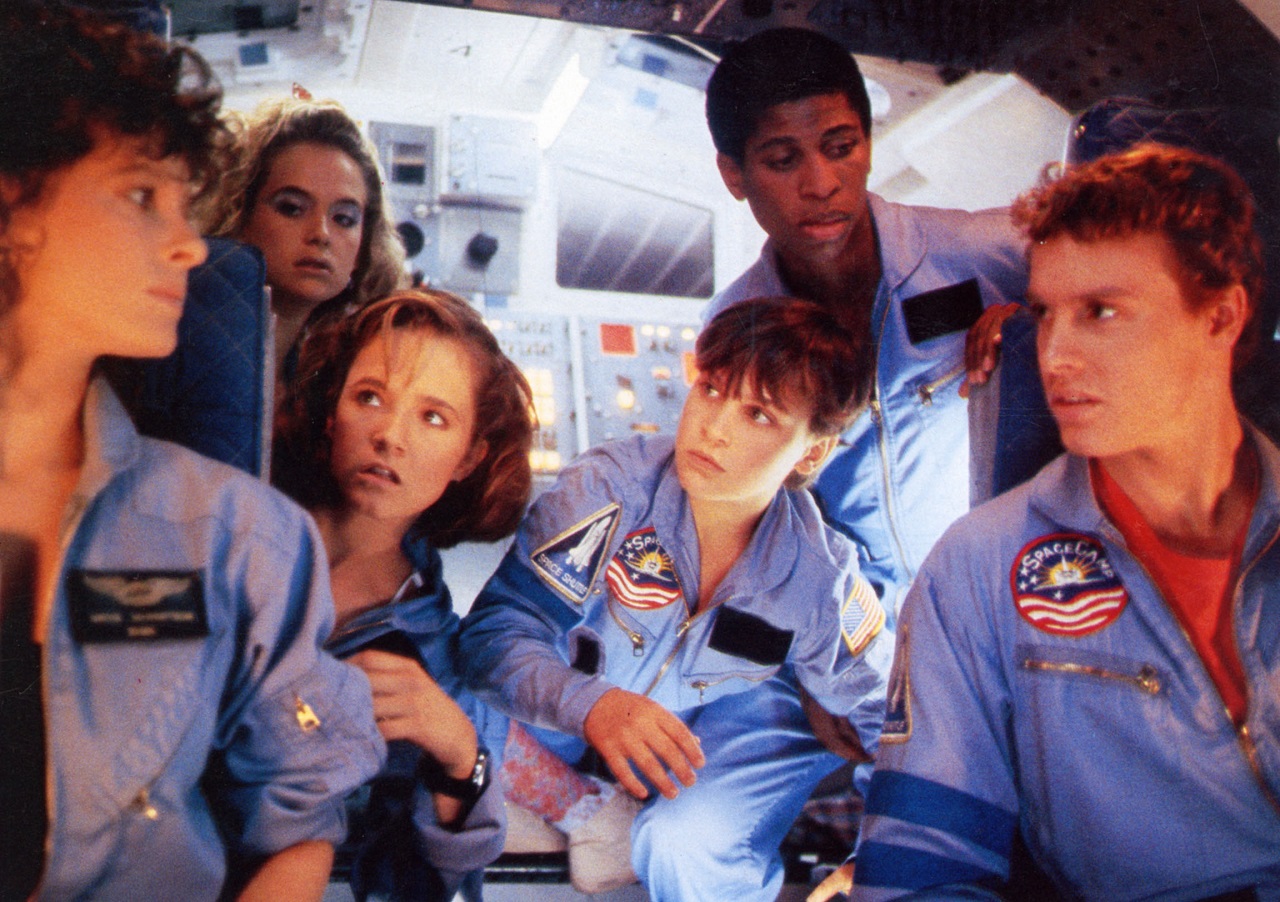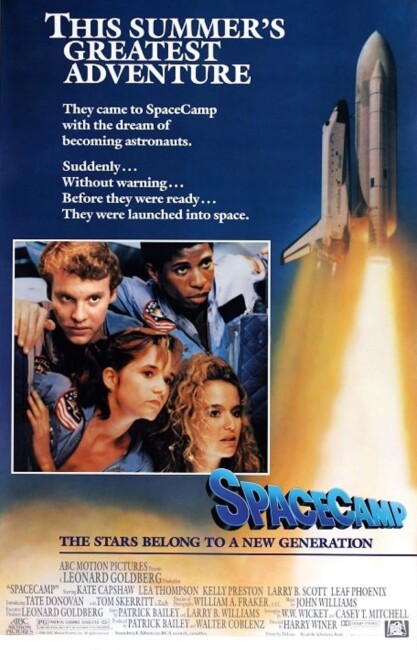Crew
Director – Harry Winer, Screenplay – Casey T. Mitchell & W.W. Wicket, Story – Patrick Bailey & Larry B. Williams, Producers – Bailey Coblenz & Walter Coblenz, Photography – William A. Fraker, Music – John Williams, Visual Effects – Van Der Veer Photographic Effects, Special Effects – Mike Fink & Barry Nolan, Production Design – Richard MacDonald. Production Company – ABC Motion Pictures.
Cast
Kate Capshaw (Andie), Lea Thompson (Kathryn), Tate Donovan (Kevin), Leaf [Joaquin] Phoenix (Max), Kelly Preston (Tish), Tom Skerritt (Zach), Larry B. Scott (Rudy)
Plot
A group of teenagers attend NASA’s real-life Spacecamp, a summer holiday camp where they go through the space-shuttle training programme using simulators. Max, a bright younger boy with the group, feels left out and commiserates to an intelligent service-robot he has befriended that he wishes that he was in space for real. Taking sympathy, the robot alters the system and arranges for Max’s group to be the one chosen to be in the cockpit of the space shuttle Atlantis during a routine refuelling. It then arranges an accidental firing of one of the tanks. This means that the shuttle has to be launched to stop it from exploding on the launch pad. In orbit, the group of teenagers find themselves desperately unprepared – without adequate oxygen supplies, radio contact with ground control or even the proper technical skills to get back down again.
With its premise of ‘Teenagers in Orbit’, Spacecamp seems a desperately unappealing prospect that one sits down to watch with critical razors automatically primed and ready to pounce. The first quarter touches bases with all the clichés of the 1980s teen coming of age tale – making out, conflict with adult authority, pressure to academically succeed, the lonely youngster – and with an earnestness and lack of depth that leaves one feeling that they can more or less write the rest of the review by rote.
The single worst part is the nauseatingly cute robot, which appears to have been lifted wholesale from the same year’s Short Circuit (1986). The robot is there solely to act as a deus ex machina to set the improbable scenario up. It feels decidedly out of place as it, for one, demonstrates a level of computer technology that is way beyond the level of scrupulous realism that the film strives to attain elsewhere.
However, once it gets into orbit, Spacecamp surprises one and pick up to become a halfway decent endeavour. In these scenes it provides a fairly accurate and interesting view of NASA technology at work. (It was all filmed on location in the real-life Spacecamp and the actual Atlantis shuttle simulator in Huntsville, Alabama). The characters and dilemmas come in such a way that one can see the outcome and the individual lesson each character must learn moving into place miles ahead, but each dramatic frisson is manoeuvred well enough. The end result falls halfway between passable competence and that initial deadening earnestness that nearly kills the show.

Of the teens, at least Lea Thompson plays with a moody complexity that gives more to the role than the others who play their squabbles as though they are auditioning for tv sitcoms. The effects work is considerably let down by a preponderance of blue matte lines around just about everything.
The film’s unfortunate problem was in being made just before the Challenger space shuttle disaster, something that ended up having its release delayed by six months and then being released to only middling box-office response.
Director Harry Winer’s one other entry into genre cinema was the fascinating Bigfoot mockumentary The Legend of Bigfoot (1975). His only other works have been in television.
Film online in several parts beginning here:-


